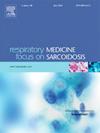空气净化器减少猫过敏反应的功效:使用环境暴露室的随机临床试验
IF 3.5
3区 医学
Q2 CARDIAC & CARDIOVASCULAR SYSTEMS
引用次数: 0
摘要
背景:空气净化器通过减少污染物和空气中的过敏原来改善室内空气质量。只有少数临床研究显示其对环境暴露室(EECs)呼吸系统疾病的疗效。目的评价戴森HEPA H13过滤器(大+静甲醛)空气净化器对猫过敏患者过敏反应的疗效。方法本研究为单中心、随机、双盲、平行组研究,纳入30例GINA 1-2例伴有或不伴有变应性鼻结膜炎的猫哮喘患者。根据患者的过敏史和哮喘史以及猫过敏原皮肤点刺试验纳入患者(就诊1)。在随机分组时(访问2),患者在ALYATEC EEC中暴露于80 ng/m3猫过敏原2小时后出现早期哮喘反应(EAR)。第二次过敏原暴露(访问3)评估空气净化器与安慰剂相比对支气管、鼻腔和眼部反应的影响。结果治疗组患者的ar明显延迟(p = 0.02)。暴露50分钟后,活性组没有患者发生EAR,而安慰剂组为53.3%。与安慰剂组73.3%相比,活性组EAR患者FEV 1率降低了40% (p = 0.06)。空气净化器减少了52.2%的鼻结膜炎,平均TSS为1.6,而安慰剂组为3.3 (p = 0.03)。与安慰剂相比,活性组鼻炎反应得到改善(p = 0.03)。空气净化器使猫过敏原从79.6 ng/m3降至14.2 ng/m3。结论空气净化器改善了ALYATEC EEC猫过敏原暴露期间的临床过敏反应。本文章由计算机程序翻译,如有差异,请以英文原文为准。
Efficacy of air cleaners to reduce allergic responses to cat: A randomized clinical trial using an environmental exposure chamber
Background
Air cleaners improve indoor air quality by reducing pollutants and airborne allergens. Only a few clinical studies showed their efficacy in respiratory diseases in environmental exposure chambers (EECs).
Objective
To assess the efficacy of the Dyson HEPA H13 filter (Big + Quiet Formaldehyde) air cleaner on allergic responses in cat-allergic patients.
Methods
This single-center, randomized, double-blind, parallel-group study enrolled 30 GINA 1–2 cat-asthmatic patients with or without allergic rhinoconjunctivitis. Patients were included (Visit 1) according to their allergy and asthma history and skin prick testing for cat allergens. At randomization (Visit 2), patients presented early asthma response (EAR), during 2-h exposures to 80 ng/m3 of cat allergen in ALYATEC EEC. A second allergen exposure (Visit 3) evaluated the impact of air cleaners on bronchial, nasal and ocular responses as compared to placebo.
Results
EAR was significantly delayed in the active group (p = 0.02). After 50 min of exposure, no patient developed EAR in the active group, compared to 53.3 % in the placebo group. FEV 1 rates were reduced in 40 % of EAR in the active group compared to 73.3 % in the placebo group (p = 0.06). Air cleaners reduced rhino-conjunctivitis by 52.2 % with a mean TSS of 1.6 compared to 3.3 in the placebo group (p = 0.03). Rhinitis responses were improved in the active group, compared to placebo (p = 0.03). Air cleaners decreased cat allergen from 79.6 ng/m3 to 14.2 ng/m3
Conclusions
Air cleaners improved clinical allergic responses during cat allergen exposures in ALYATEC EEC.
求助全文
通过发布文献求助,成功后即可免费获取论文全文。
去求助
来源期刊

Respiratory medicine
医学-呼吸系统
CiteScore
7.50
自引率
0.00%
发文量
199
审稿时长
38 days
期刊介绍:
Respiratory Medicine is an internationally-renowned journal devoted to the rapid publication of clinically-relevant respiratory medicine research. It combines cutting-edge original research with state-of-the-art reviews dealing with all aspects of respiratory diseases and therapeutic interventions. Topics include adult and paediatric medicine, epidemiology, immunology and cell biology, physiology, occupational disorders, and the role of allergens and pollutants.
Respiratory Medicine is increasingly the journal of choice for publication of phased trial work, commenting on effectiveness, dosage and methods of action.
 求助内容:
求助内容: 应助结果提醒方式:
应助结果提醒方式:


